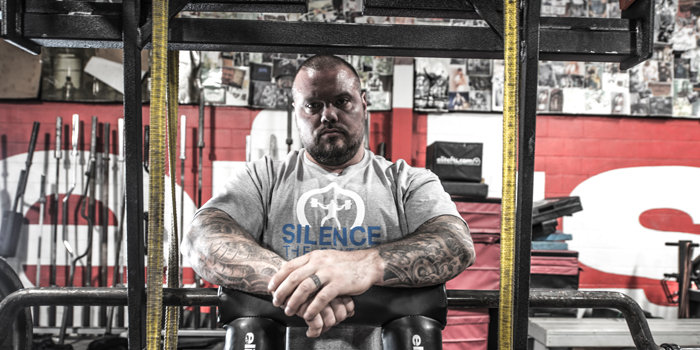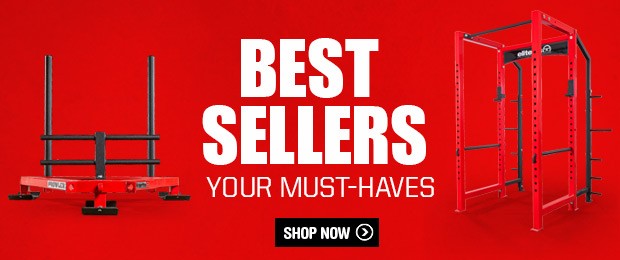
In Part 1 of my BAMF Wrestler series, I gave you a glimpse of a detailed year-round wrestling training program I’ve been developing with my friend, colleague, and Strength N Honor Training Facility’s head strength and athletic conditioning coach and owner Steve “Kono” Konopka. We talked about challenges we’ve seen in modern wrestling programs, training frequency, and the importance of letting kids be kids.
In this installment, Kono and I go more in-depth about our wrestling programs, particularly topics covering: in-season training goals, off-season exercises to avoid, signs for a recovery session, favorite exercises, and a sample in-season schedule.
In-Season Training Goals
The wrestler’s health is my number one concern. In-season training sessions require a lot of maintenance work, especially when trying to maintain off-season gains. The Iowa Hawkeyes Coach Doyle once told me, “If you don’t lift in-season, don’t lift in the off-season.” I hate it when coaches tell their athletes they don’t want them to lift in-season. Lifting is key to keep wrestlers in top shape near their weight class. We do all we can to avoid the “starvation method.”
Kono and I both agree that health is a top priority, and so it’s also important to work around any hiccups. Kono shoots for maintaining 80 percent of the pre-season max score in the big three lifts. It’s a great indicator on how well the program is working for the athlete.
Exercises to Avoid in the Off-Season
I keep a close eye on wrestlers and encourage communication in both the on- and off-season. Personally, I don’t avoid any one, single exercise. Worst-case scenario, we scale things down and stay away from conditioning since the kids are getting plenty of that at practice.
As Kono mentioned, it’s important to avoid injuries – and at the very least, work around any injuries. Shoulders get abused during the season, and some exercises like the bench can be rough on the rotator cuff and a/c joint. Kono still wants to see some good horizontal pressing but prefers different variations, such as a dumbbell press with a slight incline and neutral grip, neutral grip floor presses using dumbbells or multi-grip bars like the elitefts American Gridiron bar, or jammer arm presses.
Kono’s off-season staples are dips and weighted dips. As a general rule, Kono avoids exercises that athletes aren’t accustomed to doing in the off-season or put a heavy load on the lower back and spine. It’s why he has the kids doing front squats instead of back squats:
“From experience, it’s a better risk versus reward exercise.”
Picking Up on Recovery Session Signals
With more than 10 years of strength and conditioning work under my belt, I easily pick up on any signs of distress. A change in mood, body language and intensity levels tend to be what I look for. Sometimes it’s best to work around these issues, but sometimes you can’t do that. Wrestling is demanding, and it takes a toll on kids, both mentally and physically. I’ve had wrestlers break down emotionally, and it shows in their performance.
Kono and I cannot stress enough how important it is to talk to wrestlers. Communication is key. Every kid has a different personality and situation. One kid might a pep talk after losing a match; another one might have other issues going on outside of the weight room. It’s important to read mood, body language, and intensity, but sometimes you’ve just got to listen to them. Kono excels at this:
“As you get to know the athletes better it is easier to pick up the signs. Mood and body language are the first signs and having a 15-second conversation with the athlete will let you know if they are down because their girlfriend was playing Fortnight with some other guy or there really isn’t much gas left in the tank and they are run down. Seeing the wrestler not reaching the correct reps on more than one or two sets is another telltale sign.”
Along with talking things out with wrestlers, we also recover through body tempering, stretching, ice tub, lacrosse ball, and more. Sometimes we’ll send them to a massage therapist or chiropractor.
Tried and True Wrestling Exercise Must-Haves
We’re a little old-school in our favorite workouts. I’m all about what I call “the Big Three:” squat, bench press, and deadlift. I love having wrestlers do these in-season. Sometimes we’ll do it at a lower percentage or variation. Pulls are also one of my favorites. I’ll also have my kids do what I call a “Tank Shoulder Press.” Simply take two dumbbells and get into a 90-degree angle and hold it. Raise both dumbbells at a 90-degree angle and raise until your triceps are parallel to the floor, then return to the setting position. We usually do this for time at a controlled slower pace working on form and keeping the 90-degree angle all the way through.
Kono swears by neutral grip pull-ups, farmer’s walk, and trap bar deadlifts, but he also has a fourth one that stands out a bit more than the rest:
“An exercise I really love to use in-season that’s a little different, but I feel has some good bang for the buck is a 90/90 hold. Using an under-hand grip, the athlete pulls themselves up until their arms are at 90 degrees. Next, they bring their knees up to 90 degrees, and they hold that position for time. Usually we start off with a few reps of 20-30 second holds. Some of my savages can hang there for an hour, so we add bands to add an eccentric resistance; and/or we have a partner tapping on their knees. This exercise works grip strength, bis, back, core, and is de-loading the spine as well.”
A Peek at the Typical In-Season Week
Wrestlers have a very demanding schedule in-season. Most go to school all day then practice for a few hours after. This usually takes a lot of their time and energy. We try our best to get them in early in the AM (6 a.m. or earlier) or on the weekends or holiday breaks (days off school). Training two to three times a week will suffice. I like to complement what they are doing in their practices and not hit too many high reps or conditioning drills to avoid beating a dead horse. Obviously if they need to cut a few pounds, some extra conditioning is OK and will help avoid the starvation method as we spoke on.
We try to use exercises that are easy to access for the average high schooler, but we also throw in a few different ones thrown due to the equipment we have available in our private facilities.
Warm-up:
RPR and mobility work, 5-8 minutes. If cold or coming straight from practice: dynamic warm-up.
Lift, upper body-based:
- Bench Variation (choice): working up to a heavy 3 to 5 reps
- Pull-ups (vary grip): 5x5 to 8 reps
- Dumbbell Military Press: 4x5 to 8 reps
- Kettlebell Rows: 4x5 to 8 reps
- Band Pull-apart/Curl Superset: 3 to 5 sets for time
- Stretch/body tempering/ice/neck
Superset/Finisher, if needed:
- Band Pull-aparts (time) (SS) sleds (time): 30/45/60 seconds depending on what we are trying to get out of it and time allowed for session.
- lyo-Push-Ups (time) (SS) Face-Pulls (time) (SS) Resisted Sprints: 30/45/60 seconds depending on what we are trying to get out of it and time allowed for session.
- Plate Push (time) (SS) Hammer Curls (time) (SS) Sled Pulls (time) (SS) Rice Diggs (time): 30/45/60 seconds depending on what we are trying to get out of it and time allowed for session.
Kono's In-Season Week
Most of Kono’s wrestlers have dual meets on Wednesdays and tournaments or quads on Saturdays, so he has two to three sessions per week (usually on Sundays, Mondays, and Thursdays), which he closely regulates.
Depending on the athlete, any one of these days can be changed to a recovery session of stretching, foam roll, box breathing, light body tampering, stationary bike, and ice tub.
Athletes with any nagging injuries always start with rehabbing before moving into their in-season strength and performance session.
Kono’s Sample Sunday Session (full-body workout, no loaded barbells):
Warm-up:
- 3-minute Airdyne comfortable pace/rower or treadmill set at 3.5 mph set at a 2 incline with Agile 8
Strength N Honor Prime Circuits (2 times through):
- 10 Hanging Leg Raises
- 10 Banded Hip Thrusts with a 2-second hold at top
- 20 Face Pulls
- 3 Medicine Ball Slams
1. Neutral Grip Chins: 3x1 rep before failure 2-minute rest between sets (Long arms slower strict negatives over 12 reps; add weight under 5 reps add band assistance)
Superset:
2a. One-armed Dumbbell Full-body Push Press: 3x8 with neutral grip at half an inch before lockout
2b. GHD Ham Curls
Superset:
3a. Dumbbell Farmer's Walks: 2x6 laps or 30-second walk
3b. Band Triceps Pushdowns: 2x30 reps
Kono's Sample Monday Session (full-body workout, press dominant):
Warm-up:
3-minute Airdyne comfortable pace/rower or treadmill 3.5 mph 2 incline with Agile 8 warm-up
Strength N Honor Prime Circuit (2 times through):
- 10 Hanging Leg Raises
- 10 Banded Hip Thrusts with a 2-second hold at top
- 20 Face Pulls
- 3 Medicine Ball Slams
1a. Barbell Front Squats 12/8/6/3/3 (sets of 3 reps should be hard but you should always be able to get 4 or even 5 reps with that weight, 3-minute rest on sets of 3)
*Regression for 1a: Use dumbbells for front squats or bear hug with heavy Medicine Ball
1b. 3 Broad Jumps for Distance, only after last set (control and stick landing! Walk back and repeat for 3 jumps)
Superset:
2a. Inverted Rows: 3x strict failure underhand grip (over 25 reps add weight under 5 reps do 5 negatives)
2b. Dumbbell Floor Press: 3x6 (neutral grip elbows tight 1-second up to 3-second negative)
Superset:
3a. Dumbbell Shrugs: 2x12
3b. Hammer Curls: 2x8
Kono's Sample Thursday Session
Warm-up:
3-minute Airdyne comfortable pace/rower or treadmill 3.5 mph 2 incline with Agile 8 warm-up
Strength N Honor Prime Circuit (2 times through):
- 10 Hanging Leg Raises
- 10 Banded Hip Thrusts with a 2-second hold at top
- 20 Face Pulls
- 3 Medicine Ball Slams
1a. Trap Bar Deadlift: 12/8/6/3/3 (sets of 3 reps should be hard but you should always be able to get 4 or even 5 reps with that weight, 3-minute rest on sets of 3)
*Regression for 1a: Add pads under the plates to shorten the range of motion, dumbbell deadlift, or single kettlebell sumo deadlift
1b. Box/Bench Jumps only after last set of 3 reps; stick the landing, step down slowly
Superset:
2a. Static Hold Lat Pulldown with Bands: 3x5 reps, 10-second holds
2b. 1-Armed Landmine Press: 3x6
Superset:
3a. Split Stance Double Dumbbell Rows: 2x6 each foot forward (right foot forward, hip hinge back, back flat, core tight, long arms, double row with elbows tight to ribs. Some describe motion of the exercise like pulling up your pants 6 reps with right foot forward then 6 with left foot forward)
3b. Wrist Roller or Grip Work: 2x25
Stay tuned for #BAMFW PART 3 where we will talk about:
- Daily Pre-Practice Warm-Up
- Bulletproof Shoulder Circuit
- F*#k the Bottom: You Belong at the Top Conditioning Circuit
Any questions, comments, and feedback are always welcome and appreciated.
Steve “Kono” Konopka can be emailed at strengthnhonorgym@gmail.com, and Chris Janek can be emailed at tankstrainingfacility@yahoo.com. They are also available on social media outlets at Strengthnhonortraining and tankstrainingfacility, respectively.










